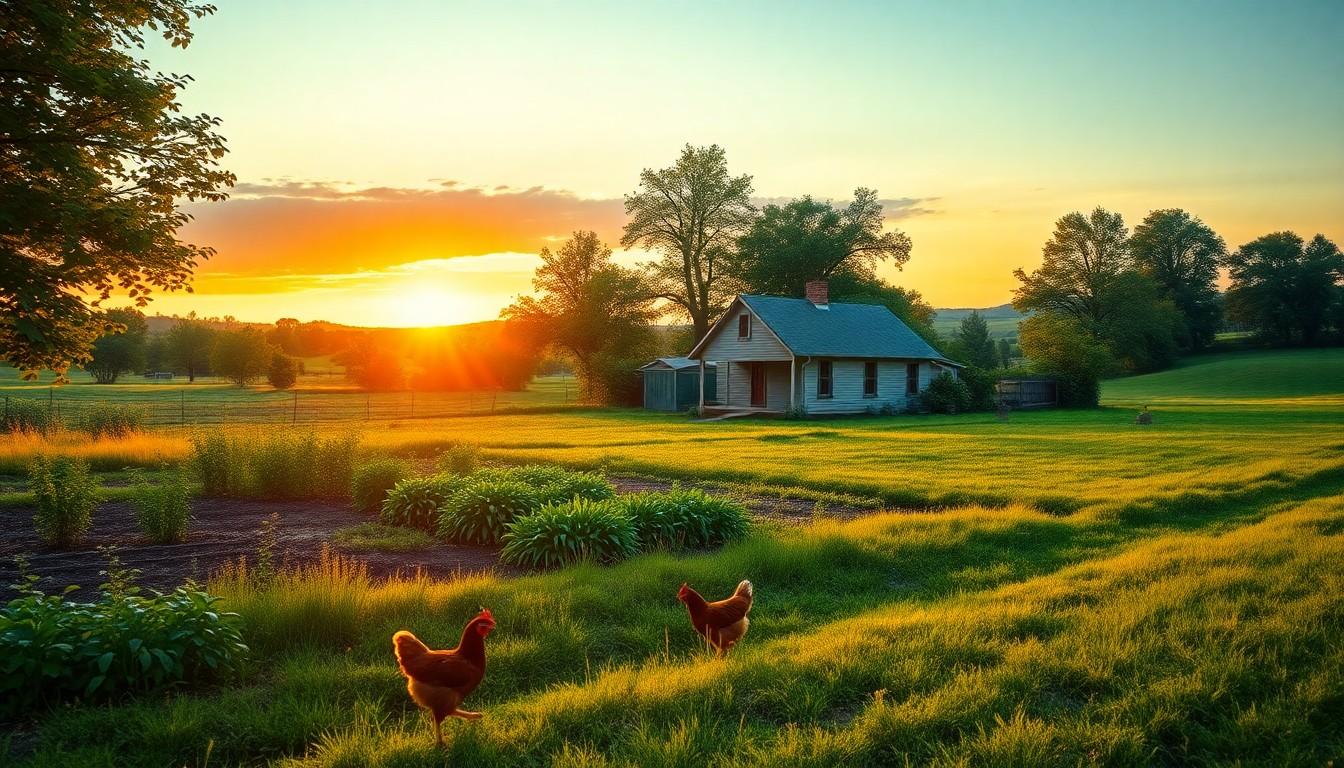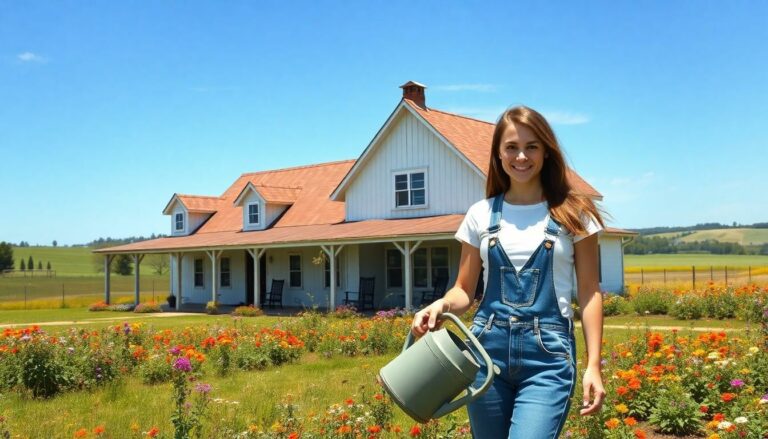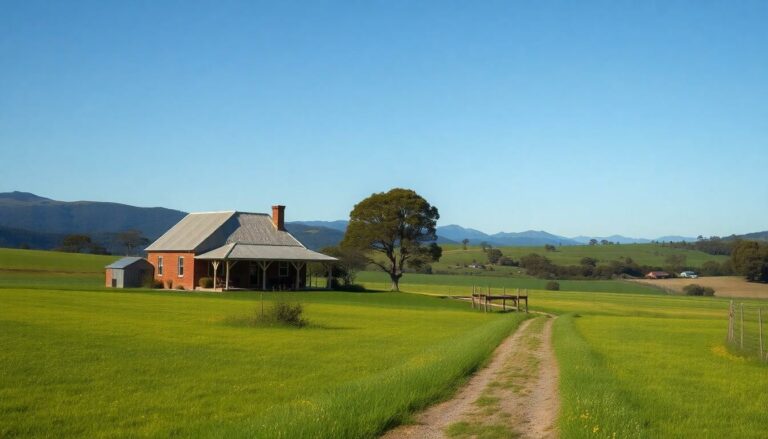In a world where city life buzzes like a caffeinated squirrel, small rural properties offer a refreshing escape. Picture this: a cozy cottage nestled among rolling hills, where the only traffic jam involves a couple of cows and a playful squirrel. If peace and tranquility sound appealing, these hidden gems might just be the ticket to your dream lifestyle.
Small rural properties are more than just a slice of land; they’re a chance to reconnect with nature and embrace a slower pace. Whether it’s growing your own veggies or simply enjoying the starry skies without city lights, these properties come with a unique charm. So why not trade in the concrete jungle for a bit of green? Your ideal rural retreat awaits, and it might just be the best decision you ever make—unless you count that time you bought a pet rock.
Small Rural Properties for Sale
Small rural properties attract buyers seeking tranquility and a slower pace of life. These estates come in various sizes and styles, featuring cozy cottages, rustic cabins, and charming farmhouses. Larger plots often include gardens, which provide ample space for growing vegetables and flowers.
Nestled among nature, small rural properties offer stunning landscapes, like rolling hills, tranquil lakes, and expansive forests. Access to outdoor activities enhances their appeal, enabling residents to hike, fish, or enjoy horseback riding. Many properties are near small towns, providing essential amenities while maintaining rural charm.
Affordability often characterizes these properties, with prices significantly lower than urban real estate. For instance, average prices for rural homes can range from $100,000 to $300,000, depending on location and features. This price range allows first-time homebuyers and those looking to downsize access to viable options.
Potential investors also see value in small rural properties. Rental opportunities exist, especially in areas with tourist attractions, like national parks or lakes. Airbnb properties in rural locations can generate substantial passive income due to increasing demand for unique getaway experiences.
Community connections form another aspect of rural living. Residents often support local farmers’ markets and engage in community events. Building relationships with neighbors enhances the overall experience, fostering a sense of belonging.
Overall, small rural properties provide a unique lifestyle choice, combining affordability with natural beauty and a close-knit community atmosphere.
Benefits of Owning Small Rural Properties

Owning small rural properties presents distinct advantages, enriching lifestyles and enhancing personal satisfaction.
Improved Quality of Life
Living in a rural area promotes a quieter atmosphere, supporting relaxation and mental well-being. Residents enjoy natural surroundings which encourage outdoor activities. Access to fresh air improves overall health, while reduced noise pollution creates a peaceful environment. Sunsets, starry nights, and open spaces foster a connection to nature often lost in urban settings. Lower stress levels can lead to better mental clarity. Embracing simplicity beautifies daily life, allowing for greater appreciation of small moments.
Opportunities for Self-Sufficiency
Small rural properties provide a unique chance for self-sufficiency. Many owners cultivate vegetable gardens, ensuring access to fresh produce. Raising livestock like chickens or goats becomes feasible, enabling a sustainable food source. Homeowners tap into natural resources, promoting environmentally-friendly practices. The ability to create renewable energy through solar panels enhances independence. Rural properties often allow for well water systems, reducing dependence on municipal services. DIY projects and community connections foster a spirit of collaboration, enriching both personal and communal growth.
Factors to Consider When Buying
Several important factors influence the decision to purchase small rural properties. Understanding these considerations ensures a satisfying investment and living experience.
Location and Accessibility
Location plays a crucial role in buying rural properties. Proximity to essential services like grocery stores, schools, and healthcare facilities enhances convenience. Assessing access to major roads and public transportation can impact daily commuting. Researchers find that scenic views often come at a premium price, so balancing beauty with practicality matters. Checking for nearby outdoor activities, such as hiking and fishing spots, can add value to the property. Moreover, considering the local climate helps prospective buyers understand seasonal living conditions.
Zoning and Land Use Regulations
Zoning laws dictate how land can be used in rural areas. Understanding these regulations prevents future conflicts and ensures compliance. Buyers should investigate permitted uses, which can include residential, agricultural, or recreational purposes. Researching local ordinances helps determine if constructing additional buildings or adding livestock is possible. Additionally, restrictions on property modifications may exist, impacting personal projects. Evaluating the zoning classifications can significantly influence the potential for property improvements and resale value.
Popular Areas for Small Rural Properties
Several regions stand out for small rural properties, each offering unique features and benefits.
- Appalachian Mountains
Properties nestled in the Appalachian Mountains provide breathtaking views and abundant outdoor activities. Hiking and fishing opportunities abound, making it appealing for nature enthusiasts.
- Pacific Northwest
The Pacific Northwest attracts those drawn to lush landscapes and temperate climates. Affordable cabins and farmhouses here often sit near pristine lakes and forests, promoting a lifestyle immersed in nature.
- Midwest Plains
In the Midwest, flat plains and rolling hills create affordable options. Small farmhouses often feature large lots that support gardens and livestock, fostering self-sufficiency.
- Southern States
Southern states boast charming rural properties that offer warm climates and friendly communities. Many buyers find value in historic cottages and sprawling estates near vibrant small towns.
- New England
New England provides quaint villages with a rich history. Here, picturesque homes with ample character attract those wanting a cozy lifestyle amidst beautiful autumn foliage.
- Texas Hill Country
The Texas Hill Country stands out for its scenic beauty and diverse landscapes. Small ranch-style homes often highlight expansive views and access to a slower pace of life.
Each area presents a distinct environment that enhances the appeal of small rural properties. Proximity to recreational activities and a sense of community frequently influence buyers’ decisions. The availability of essential amenities and natural beauty enhances property desirability. Engaging in local markets and community events strengthens connections among residents, contributing to a fulfilling rural lifestyle.
Financing Options for Small Rural Properties
Financing small rural properties often involves various options tailored to different buyer needs. Traditional mortgages represent one popular choice, providing long-term financing usually spanning 15 to 30 years. Borrowers generally require a down payment of 10 to 20 percent of the property’s purchase price.
FHA loans serve as another alternative, specifically targeting low to moderate-income buyers. With these loans, down payments can be as low as 3.5 percent. Properties must meet certain criteria to qualify for this funding type.
USDA loans specifically cater to rural property buyers, offering 100 percent financing for eligible areas. Buyers can benefit from reduced mortgage insurance rates. Applicants usually require lower credit scores compared to conventional loans, making homeownership more accessible.
In addition, personal loans can serve as a bridge for buyers needing quick access to cash. These loans work well for down payments or renovations, although interest rates tend to be higher than traditional financing options.
Sellers may also consider offering seller financing, creating a direct line of credit between the buyer and seller. This method allows for flexibility in negotiating terms, including down payment amounts and interest rates.
Investment properties often necessitate different financing strategies, such as hard money loans. These loans focus primarily on the property’s value rather than the buyer’s creditworthiness. With shorter repayment terms, they offer swift funding for those looking to flip or rent rural properties quickly.
Exploring these financing options can help potential buyers determine the best fit for their financial situations and property goals. Various programs exist to support buyers in achieving their rural living dreams.
Peaceful Lifestyle Away From the Hustle
Small rural properties present an enticing opportunity for those seeking a peaceful lifestyle away from the hustle and bustle of city living. With a variety of options available at affordable prices these properties not only offer a chance to reconnect with nature but also promote a healthier and more fulfilling way of life.
Investing in a rural retreat can lead to personal growth and community engagement while providing a unique living experience. As potential buyers explore financing options and consider various regions they may find that a small rural property is more than just a home—it’s a gateway to a vibrant and enriching lifestyle.




